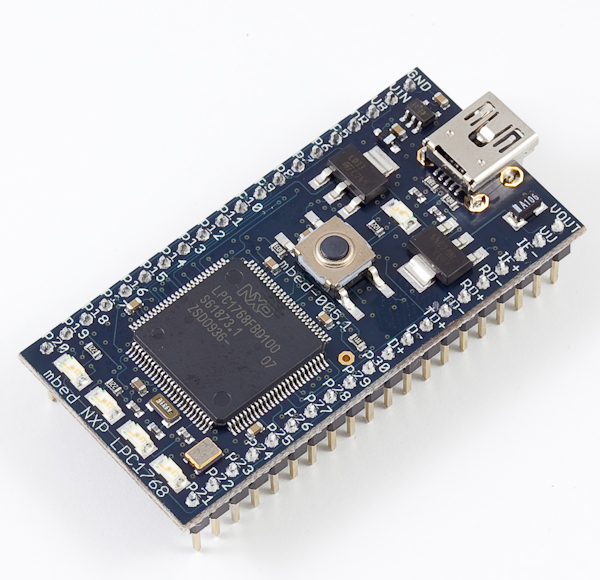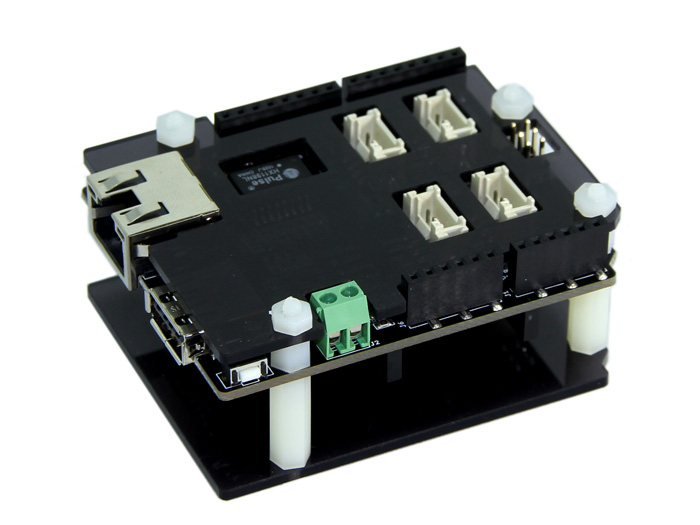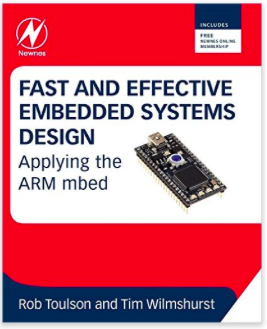Recent Posts
mbed LPC1768 Baseboards With CAN Bus (Controller Area Network) Port
Posted by on
This post is part of a series on CAN Bus and SAE J1939 Prototyping with the ARM Cortex M3 processor.
I will take a risk by repeating myself over and over again by saying that the mbed LPC1768, as well as the Arduino Due, is utterly useless in its bare form. In order to accomplish any serious functionality, you need to add (i.e. purchase) additional components, for instance, transceivers for RS-232/422/485 or CAN. Yet again, the design concept was to provide a low-cost, ARM-based embedded system. However, in my personal view, the low-cost advantage is eliminated as soon as you add CAN transceivers into the equation. An mbed LPC1768 system with added hardware will easily reach a cost-level of fully integrated system such as the LandTiger or jBoard-X2.
In order to add full CAN functionality to the mbed LPC1768, you will need either one or two external CAN breakout boards (see references below), since the board supports up to two CAN ports.
CAN Bus Breakout Boards:
For more, detailed information on connecting the mbed LPC1768 to a CAN Bus breakout board, see our post App Note: mbed LPC1768 Development Kit With CAN Bus Breakout Board.
There are two alternatives to breakout boards:
- The SeeedStudio mbed Shield
- The SKPang Electronics CAN Bus Simulator with LPC1768 module
Both solutions are, of course, more expensive than adding simple CAN bus breakout boards, but they have the undeniable advantage of delivering a compact hardware design rather than the scattered and provisional design (e.g. breadboards) that comes with breakout boards. However, be aware that both systems support only one CAN channel.
SeeedStudio mbed Shield
The mbed Shield is the mbed application board based on mbed LPC1768 Prototyping Board. Just try imagine controlling Ethernet devices using environmental data from sensors. It integrates a series of external interfaces,such as CAN, Ethernet, USB and 4 standard Grove sockets, all together on a single board.The mbed Shield is also compatible with other standard Arduino Shields, providing you an even more powerful extension for your mbed.
Features
- Standard shield shape design
- Arduino-compatible basepins
- Various on-board interfaces: CAN, Ethernet, USB, Grove
Reference: http://www.seeedstudio.com
SKPang Electronics CAN Bus Simulator with LPC1768 Module
This is a CAN-Bus ECU simulator using the mbed LPC1768 module. Useful for testing OBDII interface and writing diagnostic software. ECU PIDs parameters adjustable via menu options.
Hardware Features
- mbed LPC1768 module
- mbed pre-programmed with ECU simulator firmware
- 250 or 500kb/s CAN speed
- Open source firmware
- 2x16 LED back lit LCD with contrast adjustment
- Female OBDII socket with 12v supply to interface
- 5-way menu navigation button
- 12v external PSU (included - UK 3pin mains plug)
- uSD card socket
- Lasercut acrylic baseplate and cover
- GPS input (connector not fitted)
Firmware Features
- SAE standard J1979. PIDs partially implemented. Mode 01, 02, 03
- Adjustable PID parameters via menu options:
- Engine RPM
- Throttle position
- Vehicle speed
- Coolant temperature
- MAF airflow sensor
- O2 sensor voltages
- Setting and clearing Diagnostic Trouble Codes (DTC)
- Open source firmware, other PIDs can be added
Reference: http://skpang.co.uk
Fast and Effective Embedded Systems Design: Applying the ARM mbed
Fast and Effective Embedded Systems Design is a fast-moving introduction to embedded system design, applying the innovative ARM mbed and its web-based development environment. Each chapter introduces a major topic in embedded systems, and proceeds as a series of practical experiments, adopting a "learning through doing" strategy. Minimal background knowledge is needed. C/C++ programming is applied, with a step-by-step approach which allows the novice to get coding quickly. Once the basics are covered, the book progresses to some "hot" embedded issues - intelligent instrumentation, networked systems, closed loop control, and digital signal processing.
Written by two experts in the field, this book reflects on the experimental results, develops and matches theory to practice, evaluates the strengths and weaknesses of the technology or technique introduced, and considers applications and the wider context. Numerous exercises and end of chapter questions are included.
- A hands-on introduction to the field of embedded systems, with a focus on fast prototyping
- Key embedded system concepts covered through simple and effective experimentation
- Amazing breadth of coverage, from simple digital i/o, to advanced networking and control
- Applies the most accessible tools available in the embedded world
- Supported by mbed and book web sites, containing FAQs and all code examples
- Deep insights into ARM technology, and aspects of microcontroller architecture
- Instructor support available, including power point slides, and solutions to questions and exercises
 Loading... Please wait...
Loading... Please wait...




